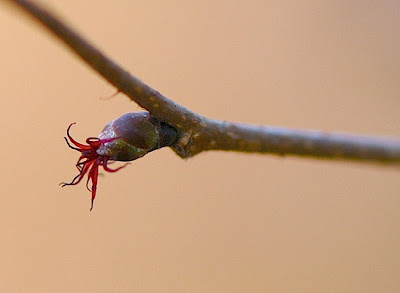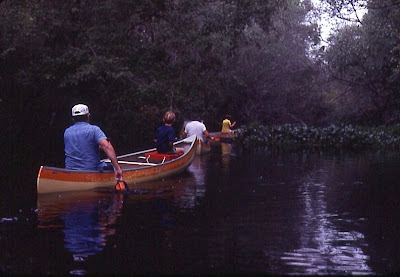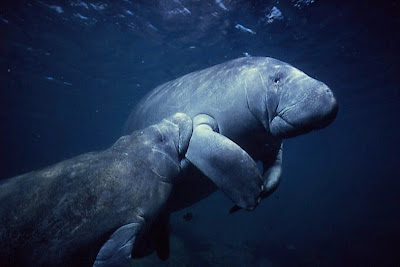It's a misty cold morning in November along the St. John's River. As temperatures drop, there is a certain ocean dwelling animal that becomes vulnerable to the chilly waters.
All along the river are various warm water springs. One of the largest is Blue Spring State Park.
Blue Spring puts out about 165 million gallons of water a day. This boil goes down 120 feet, and is popular with scuba divers. The temperatures are always between 68-73 degrees year round. When these warmer waters mix with the river, it attracts fish and one large mammal in particular.
Imagine yourself out on a quiet canoe ride in the river, or along one of the many intersecting canals. Suddenly a large gray figure approaches, no it's not an alligator, something even bigger and broader. At first all you can see are nostrils sticking up, and you can hear something taking a big deep breath.
You have just experienced your first Florida Manatee, or more properly, the West Indian Manatee. These creatures normally occur in ocean waters from Florida down to South America. A population has taken up permanent residence in the St. John's River because it has found reliable warm waters in which to spend the cold months. They can range up the coast to the Carolinas and west to Texas in the summer, but need to seek out warm water come winter.
The closest land relative to a manatee is the Elephant. Other than the backbone, manatee bones are solid like tusks. Their eyes are set way back in the head like an elephant. They have only molars for chewing plants. Their face ends in a snout and they have moveable lips for manipulating food. Their face is also covered with the same type of whiskers. Manatee flippers have the same toenails as elephants. Their back legs are fused into a broad tail. A relative of the manatee, the Australian Dugong, has a forked tail, and still shows remnants of the back legs.
Over a century ago manatee hides were used as conveyor belts. The other common name is Sea Cow. Manatees were once on restaurant menus as "sea beef". Today laws prohibit such practices, but in the 60's and 70's, with the ecological movement, people became aware this was an endangered species.
In the early 1970's, one of the first to take notice of the manatee plight was filmmaker/oceanographer Jacques Cousteau. His documentary made people worldwide aware of this animal. It was about this time that Florida purchased Blue Spring as a state park. I remember locals like Boog Powell of Major League Baseball, and Dick Butkus of the NFL making frequent visits to the park. Florida resident Burt Reynolds did TV commercials for manatees, and I had the chance to sit with the music man himself, Jimmy Buffett. Jimmy served as president of the "save the manatee club' for many years.
In the late 70's and early 80's much research was being conducted. This is a group from the University of Minnesota. Today the U.S. Fish & Wildlife Service oversees research on manatees.
Radio collars were installed to track their daily and seasonal activities.
The food chain for a manatee is simple, plants and manatees, that's it. They have no natural enemies. Sharks don't attack them in salt water, and gators leave them alone in fresh water. Manatees eat Water Lettuce, Eelgrass, Water Hyacinth, Elodea, etc. Some of these are exotics, but are native to their diet in the southern portion of their range. They can eat up to 100 pounds of vegetation a day.
Manatees spend most of their time underwater, and you have to wait for them to surface in order to get a good view. Some of the problems include death by extreme cold snaps in Florida. The Red Tide is devastating to them. By far though, most die from human carelessness. More on that in a minute.
Manatees can weigh over 2,000 pounds and be over 10 feet long. Manatees commonly stay underwater from 2 to 10 minutes at a time, but have been recorded holding their breath for 20 minutes.
He's dead! No, manatees commonly sleep on the bottom. They usually sleep on their stomachs, but now and then they may roll over on their backs. Manatees move so slow that algae grows on their back. Sometimes you'll see them scratching their back against a log or rock.
Manatees tend to be more solitary than social. If you ever see a herd of manatees playing follow the leader, they may be playing "follow the female". Manatees go into heat for about 2 weeks during the year, which can be anytime during the year, and the males will follow her anywhere, if you know what I mean. Gestation period is about 12-13 months.
A calf is born weighing 60-70 pounds. It is very dependent on the mother. They spend most of their time behind the mothers front flipper where they nurse from. Young manatees may stay with the mother for up to two years. Do the math, manatees may give birth only once every three years. They rarely give birth to twins. The life span of manatees in nature will vary. One kept in captivity lived 35 years.
Back to the problems manatees encounter. When feeding on plants, often they get tangled in fishing line. Here you can see where the line had wrapped around a fin and constricted the blood flow. This fin was saved, but isn't much good to the animal anymore. Sea World of Orlando rehabilitates wounded individuals until they can be released back to the wild.
Another potential problem is with coastal power plants. The warm water produced by the plants is sent back out, and the manatees get used to this. They have even extended their northern most range in winter due to depending on these plants. Sometimes hundreds will gather around a plant. Let's hope there are not any power outages.
Other problems include canals, locks, and flood control structures. In the locks it was not unusual in the past for them to close when calf and mother were separated. In flood control gates the force of the water often created an undertow that manatees would get stuck in and drown. Sometimes the gates would open far enough for a calf, but the mother would get stuck and then crushed upon closing. Since then gates were opened wider and locks were left open longer to alleviate the problem.
One of the biggest problems of all are motor boat propellors. Because manatees surface just far enough to stick their noses out, boaters rarely can see them. This results in ugly scars on the back of the animals. They have a very thick hide, so some of these scars are not as bad as they look.
Sometimes though, if vital organs are cut, the animal can not survive.
While these scars are terrible, it has been found that just the sheer force of being hit by the front of the boat is enough to kill them. In shallow rivers, heavy barges have been know to crush them on the bottom.
At the time I was there, all the manatees that came into the spring had marks of some sort. Extreme detailed drawings were kept on the scar patterns of every animal. This is how we knew who was who, which returned every year, who was giving birth, etc.
Unlike other places in the state, Blue Spring does not allow you to swim with manatees, at least not intentionally. If they approach you in the water is one thing, but you can not go down the spring run in certain areas. They have to be left alone in those fragile locations. Should you do something that scares them, and they swim out to the cold river to get away, that's considered harassment.
On the river outside the park are no wake zones. Slow your boat down when approaching the park.
Like any traffic laws, park police, fish & game officers, or the marine patrol will ticket you for noncompliance.
It's funny how early natural history books showed drawings of them on land. Manatees never come out of the water. Legend has it that in the old days, sailors who had been at sea too long often mistook manatees as "mermaids".
This was part of a much larger interpretive program I used to give. Photos were taken by many individuals, unfortunately there are no credits written on the slides. In the mid 1980's the population at Blue Spring was 65 animals. Today it is several hundred. Education and conservation efforts seem to be working, at least for the St. John's river population.






















































